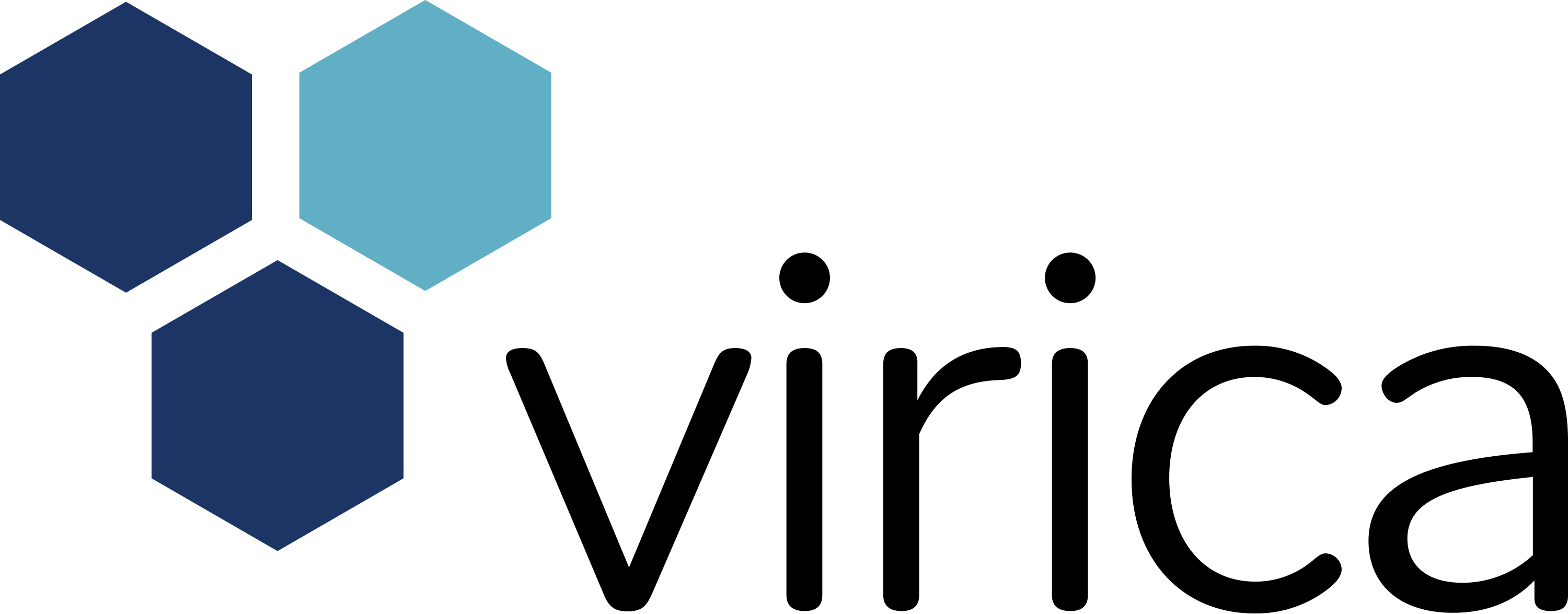Overcoming the challenge of antiviral defense in viral vector manufacturing
Cell & Gene Therapy Insights 2023; 9(8), 1097–1104
10.18609/cgti.2023.144
What are you working on right now?
JSD: Right now, we are busy guiding many of our customers on their path to using small molecules to enhance their viral vector or vaccine productivity. We have over 60 projects ongoing, with some leveraging our in-house capabilities for high-throughput virology—the ability to rapidly quantify virus output to test thousands of conditions quickly.
We are also expanding our lab capabilities as we are seeing an increasing demand for our high-throughput virology platform. Since we have been focused on guiding our clients through all these projects, our internal R&D has been on the back burner. Now, one of our key focuses is increasing capacity to bolster our R&D to support our existing programs and expand on our next-generation technologies.
How has the issue of antiviral defenses been assessed in industry-based and large-scale settings?
JDJ: This is an important question because, traditionally, the innate antiviral defenses within the cells used to manufacture viral vectors have been an underappreciated aspect of the manufacturing paradigm. More recently, Eric Barton’s group published a study demonstrating that innate antiviral pathways are very active in HEK suspension cells using traditional triple transfection adeno-associated virus (AAV) production in 50 L bioreactors. They saw induction in two waves: an early-stage induction of interferon and a later-stage induction of interferon-stimulated genes.
It is becoming clear that within these biomanufacturing platforms, the innate antiviral defense pathways are being activated and are likely playing a role in both the amount, as well as the quality of the viral vectors you get out of these biomanufacturing situations.
What is the impact of antiviral defenses on viral vector-based cell and gene therapies, and what factors contribute to the innate immune response/immunogenicity?
JSD: The two main impacts are on product yield and product quality. To appreciate that, it is important to understand that antiviral responses are a product of the specific vector system and the cells being used. The interaction between these two factors is the main determinant of what type of antiviral defense signature, including its kinetics, is involved.
There are many factors that can influence this, including those associated with the virus and cells. As many vectors are produced using plasmid transfection, the plasmid quality and structure can also have an influence, in addition to how those plasmids and genetic elements enter the cell. There are different receptors that are triggered through different entry mechanisms. The cells evolve clever ways to detect all types of viruses coming at them from many directions.
Furthermore, there is a kinetic element to the innate immune response. There are different waves of triggering antiviral defenses. First, there is the initial onset of either the infection or transfection event, wherein some impurities like lipopolysaccharide (LPS) may remain, especially at a large scale. A first wave of responses is triggered, which will impact the growth of the virus and the quality of the genomes and proteins produced. In the second phase, where the virus is starting to assemble, another round of responses is triggered that will nip at the virus from various directions.
There is a lot that remains to be understood about the way the cell fights against viruses. In the past, everyone assumed that the interferon was doing most of the job, which is why the problem of antiviral defenses was ignored for so long.
Since then, we have learned that there are different types of interferons and other cytokines that have subtle impacts on antiviral responses in different ways. There are hundreds of antiviral effectors out there, not only ones that trigger modifications and digestion of the genetic material but also post-translational modification of the vector itself. This is only now starting to be appreciated, and we are still in the early stages of understanding some of these post-translational modifications. There are many factors of influence.
JDJ: We know a fair bit about the adaptive immune system, but the innate immune system is more of a complex black box right now.
Even small amounts of pathogen-associated molecular patterns (PAMPS), such as LPS, can cause significant problems. We must think of the bioreactor as a community, with cells all signaling each other rather than simply individual cells. Even if the small amount of LPS interacts with one cell, that cell will start sending out signals that act in a paracrine and an autocrine faction. The response happens within the larger community.
Current research postulates that antiviral defenses could be rAAV yield and quality modulators. What are these quality metrics, and do they extend beyond what we know? And how does it impact viral productivity?
JDJ: For traditional cell and gene therapy vectors, such as AAV and lentiviruses, many of the quality metrics focus on our full to empty ratio or functional to physical titer. The innate antiviral defenses play a role there.
Antiviral signaling of the effector proteins culminates in the expression of hundreds, if not thousands, of genes and their proteins, whose role is to either shut down the basic processes of the cell to short-circuit viral production or physically alter either the nucleic acid or proteins within the cell. This can have a profound impact, not just on the integrity of the genomes that will be packaged within the vectors but also on post-translational modifications to the capsid. The impact of these modifications on the potency of vectors remains an open question. In current literature, it has been shown certain modifications that can either help or hinder transduction.
Point mutations and small indels, which certainly could result from the innate antiviral response, will greatly impact the potency of supposedly full vectors. That is something that we are not necessarily detecting with current approaches. The community as a whole is starting to move towards next-generation sequencing (NGS) to get a handle on heterogeneity within those viral populations. This is another interesting aspect where the innate antiviral response could be playing a role.
JSD: Particularly in the AAV space, people often use viral genomes per mL as a standard metric. From my virology perspective, there is a better way of looking at it. The viral genomes are only part of the equation. You need to look at potency and transduction efficiency to ultimately know what is going on. When we build solutions for our clients, this is the primary metric look at.
The other factor is specific productivity. As you improve the upstream yield of your viral vector, you can expect to have lower contaminants in your purified product, particularly for vectors where you need to lyse the cells and release cellular DNA into the media. Improving upstream yield indirectly benefits product quality as long as you have the purification methodologies to deal with that increased upstream productivity. Furthermore, minimizing the amount of plasmid that you are putting in will limit this antiviral defense response, which can have additional benefits in regards to any contaminants being introduced.
How is the industry tackling the problem of antiviral defenses?
JSD: We favor a small molecule-based approach that we have been studying for decades, collecting a variety of proprietary molecules that target antiviral defenses in different ways. We like the small molecule approach because it is transient and adaptable to any new situation, typically requiring no real modification to existing processes. This work has led to a library of small molecules we call viral sensitizers or VSETMs, which are used in combination to fundamentally change how cells behave.
There are, however, other ways to deal with antiviral defenses. The most clear alternate route is the genetic engineering of cell lines. The challenge here is that it takes a long time, and the antiviral defense signatures are quite complex and redundant. Some effectors that impact cell viability cannot be knocked out more than transiently at the risk of cell death. Suppose you try genetic engineering approaches to modify those particular pathways. In that case, you may end up with either a tumorigenic cell line or a cell line that takes a long time to proliferate, which will not work in a manufacturing setting. You cannot use the genetic approach to solve all problems, even though CRISPR has been tremendous for the field. There will be certain instances where the small molecule approach will continue to be the only viable approach for many years.
JDJ: Both the genetic and the small molecule approaches are complementary. For example, if someone did develop a genetically engineered cell line with certain innate antiviral defenses knocked out, there would still be redundancies within those pathways. This is where an engineered cell line plus a small molecule strategy could be viable.
With many variables at play, what are the challenges associated with standardizing the viral vector manufacturing process, particularly at scale?
JDJ: The sheer number of options in terms of the available technologies makes it difficult to standardize. There are many options for cell line lineages, media, transfection reagents, and even the different modalities of nucleic acids. There is also a wide variety of capsids—some natural, some engineered—and many different transgenes out there.
With all of those variables at play, standardization becomes a challenge. To optimize platforms, a custom approach is required. This involves matching the optimized transfection reagent with the optimized ratio of nucleic acids in a particular cell line. Bringing small molecule additives to push the envelope and maximize the output will require a customized approach rather than a standard one. A standard approach can get you to a certain level, but a customized approach is necessary to ramp up the system.
JSD: The industry is doing a good job of pushing that upper limit continuously and honing in on certain cell lines and transfection reagent combinations that consistently do a good job. Once in a while, somebody will come up with an idea that the cell does not like or that viral biology does not permit. That is where custom solutions will be needed. We need standardized basic solutions to get things going and alternative solutions once products reach commercial scale.
Even a small increase in viral vector yield will provide huge returns on investment when we are talking about applications that may require a 500 L bioreactor run to treat one patient. That is why there is such a need for technologies of all types that continue to boost the standard.
What are your key goals and priorities for yourself and Virica Biotech over the next 12–24 months?
JSD: There are many developers out there creating fantastic new therapies for rare diseases and, increasingly, less rare diseases. This is what is fueling our growth. Our technology works across a broad range of platforms, including vaccines and cell and gene therapy. There is a lot for us to do over the next few years.
A key focus for us is continuing to expand the capacity of our high-throughput virology platform. As we identify more small molecule enhancers, our high-throughput capabilities become increasingly important in rapidly providing the best combination of molecules to significantly enhance production. At the same time, that expansion in capacity will be key to allowing Virica to continue to provide new solutions for our growing list of clients, within this increasingly complex manufacturing paradigm.
As we grow and expand, my personal goal is to lead our all-star team. To ensure we continue to meet our clients’ goals, there are always opportunities for folks to join the team.
JDJ: We have traditionally focused on viral vector manufacturing and the innate response there. We know that the transduction of cellular-based therapies will also face these same challenges. Primary cells, I would argue, would have a more fully intact innate anti-viral response than HEK cell lines. Over the next 6–12 months, we will explore this avenue further to demonstrate the use of small molecules and these kinds of strategies on the transduction enhancement side.
Biographies
Jean-Simon Diallo is a Scientist with broad expertise in biochemistry, molecular biology, cancer therapeutics and viral immunology. Dr Diallo is an internationally recognized expert in oncolytic virotherapy and was seminal in the discovery of Viral Sensitizers and their development for virus manufacturing and cancer therapy applications in combination with oncolytic viruses.
Jondavid De Jong is an industry expert with over 20 years of bench experience in the fields of virology, molecular biology, oncology and nanoparticle research. As Vice President of Scientific Operations at Virica Biotech, he leads a team of highly skilled scientists and business development professionals who are dedicated to helping biotech and CDMO organizations make viral medicines a reality.
Affiliations
Jean-Simon Diallo
Scientific Founder/CEO,
Virica Biotech
Jondavid De Jong
Vice President,
Virica Biotech
Authorship & conflict of interest
Contributions: The named authors take responsibility for the integrity of the work as a whole, and have given their approval for this version to be published.
Acknowledgements: None.
Disclosure and potential conflicts of interest: The authors have no conflicts of interest.
Funding declaration: The authors received no financial support for the research, authorship and/or publication of this article.
Article & copyright information
Copyright: Published by Cell & Gene Therapy Insights under Creative Commons License Deed CC BY NC ND 4.0 which allows anyone to copy, distribute, and transmit the article provided it is properly attributed in the manner specified below. No commercial use without permission.
Attribution: Copyright © 2023 Virica Biotech. Published by Cell & Gene Therapy Insights under Creative Commons License Deed CC BY NC ND 4.0.
Article source: Invited.
Interview held: Aug 29, 2023; Revised manuscript received: Sep 13, 2023; Publication date: Sep 20, 2023.



